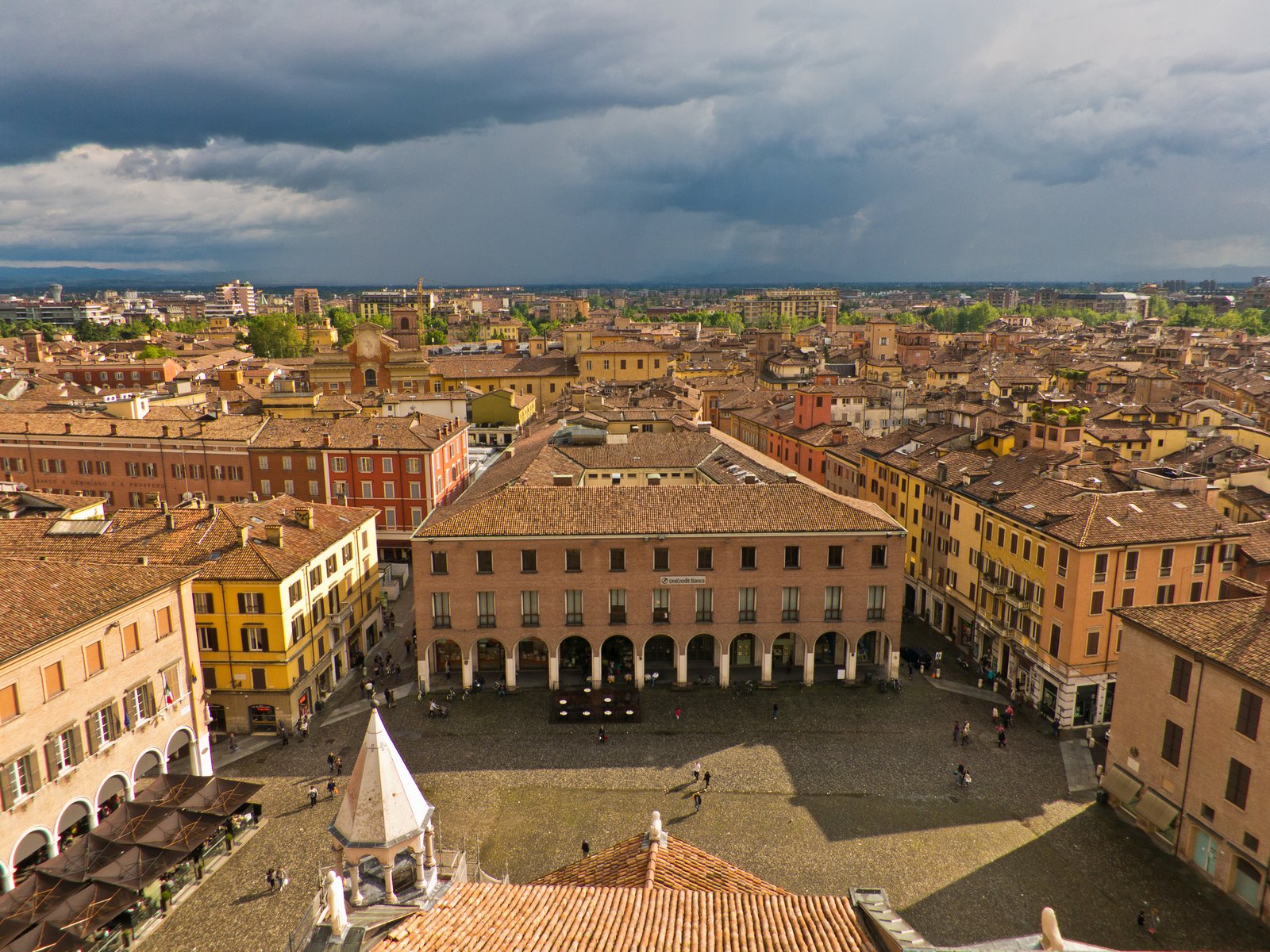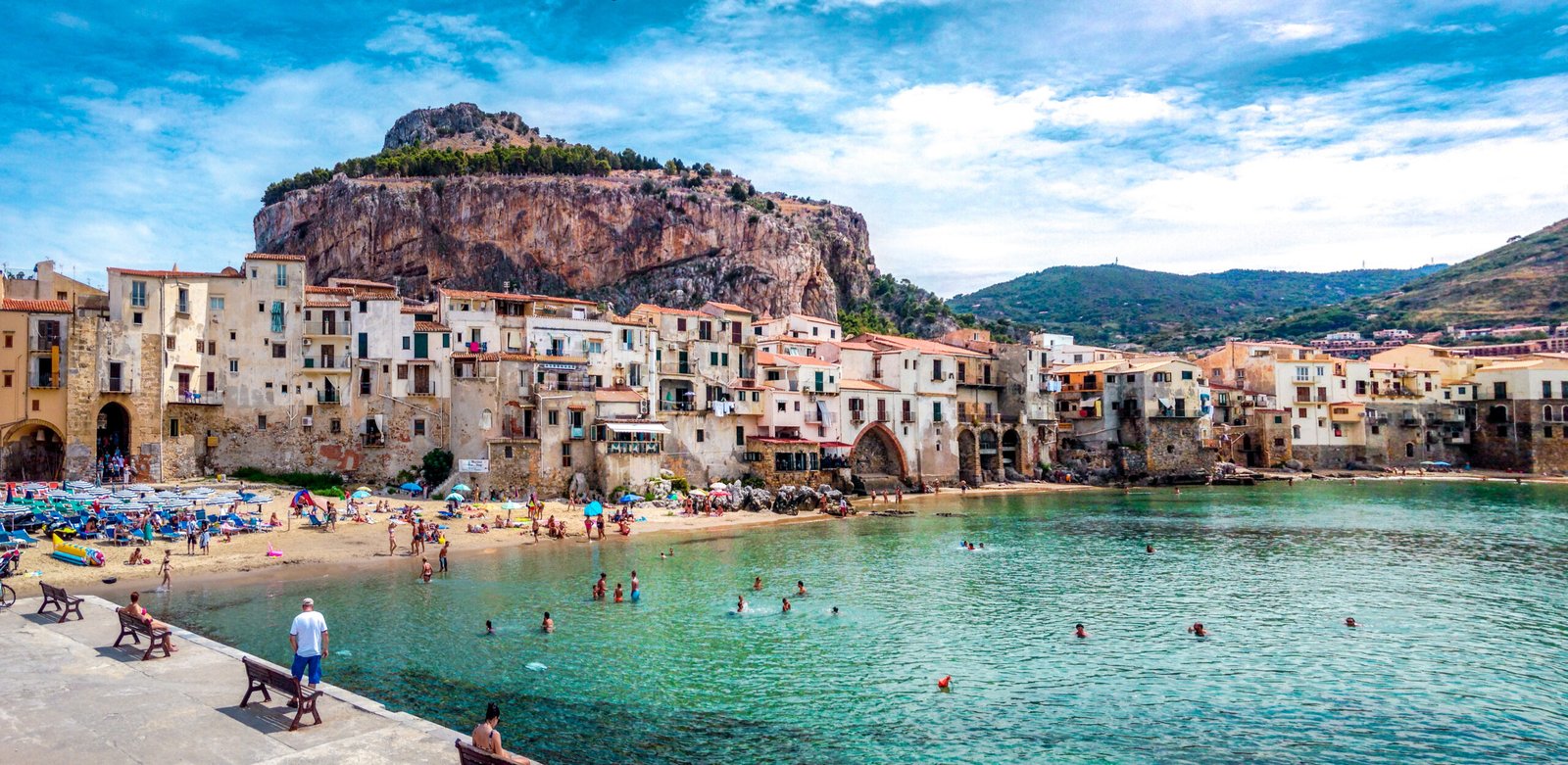The scent of aged barrels fills Modena’s cobblestone alleys. It’s as if the air carries centuries of tradition. As you explored this Emilia-Romagna gem, the promise of balsamic vinegar experience was everywhere.
The city’s heartbeat is in its acetaie. Here, old methods turn sun-ripened grapes into liquid gold. This tour invites you to taste the soul of Italian food, where every drop of aceto balsamico tells a story.
Key Takeaways
- Modena’s balsamic vinegar experience is rooted in Emilia-Romagna gastronomy, blending history and craftsmanship.
- Traditional aceto balsamico requires decades of aging, reflecting the region’s patience and passion for excellence.
- Exploring the city’s markets and family-owned acetaie reveals the heart of Italian culinary heritage.
- Emilia-Romagna gastronomy emphasizes authenticity, from vinegars to Parmigiano-Reggiano and cured meats.
- Every visit to Modena becomes a sensory celebration of food traditions worth preserving.
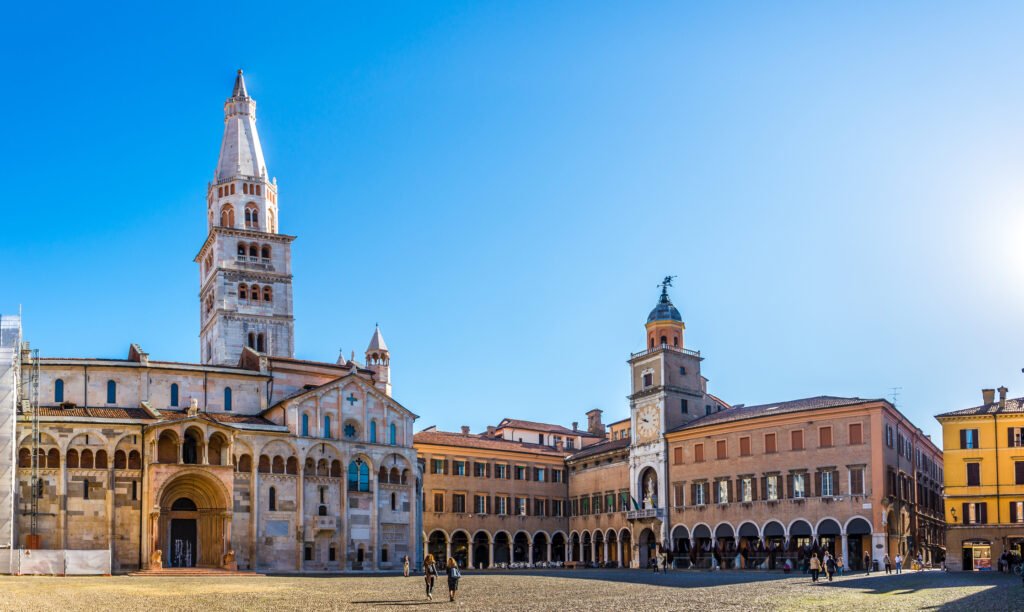
The Liquid Gold of Emilia-Romagna: Modena’s Balsamic Heritage
Walking through Modena’s cobblestone streets, you catch the scent of aceto balsamico tradizionale. This traditional balsamic vinegar is more than a condiment. It’s a key part of Italian food heritage. My journey started in a sunlit acetaia, where oak barrels shared stories of the past.
The Ancient Origins of Aceto Balsamico Tradizionale
In the 11th century, medieval texts first mentioned this balsamic vinegar history as a healing elixir. By the Renaissance, it was a sign of wealth, enjoyed by nobility. Today, it shows Modena’s growth—remaining timeless yet changing.
Why Modena’s Terroir Creates the Perfect Balsamic
Modena’s climate is perfect for making vinegar. It has hot summers and cool winters. Producers say, “The fog softens the vinegar; the heat adds sweetness,” creating the Modena DOP’s unique taste. This terroir is its heart, kept secret by families for years.
Understanding the DOP and IGP Classifications
Decoding labels is key to enjoying the real thing:
- Modena DOP: Aged 12+ years in smaller barrels; a long wait.
- Aceto Balsamico Tradizionale (DOP) vs. IGP: The latter skips the long aging, making it more affordable yet still special.
This difference changes how it’s used—from a luxury to a daily flavor booster.
From Grape to Bottle: The Artisanal Production Process
Walking through Modena’s autumn vineyards, you’ll see farmers picking Trebbiano and Lambrusco grapes. Their juice will soon turn into liquid gold. The process starts with boiling crushed grapes into a thick syrup during grape must reduction. This is done in copper cauldrons since the Middle Ages.
The air was filled with caramelized sweetness as the must simmered for hours. Its sugars turned into amber. This is where balsamic vinegar making turns raw fruit into alchemy.
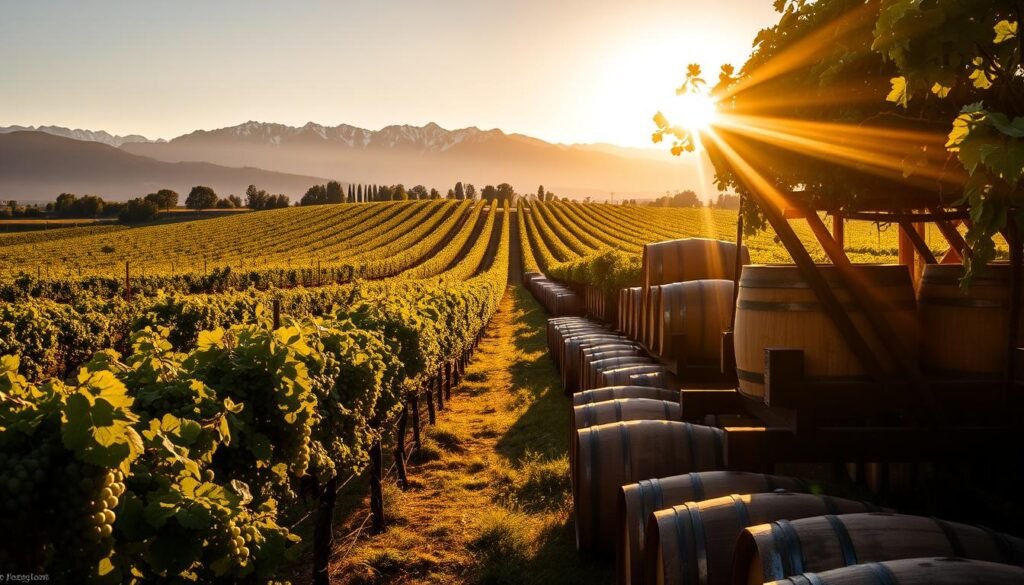
Then, fermentation begins, where wild yeasts turn the sugars into vinegar. But the real magic happens in the wooden barrel aging phase. A balsamic aging process unfolds in a batteria—a pyramid of barrels made from oak, chestnut, and juniper.
Each wood adds its own flavor: chestnut adds spice, and cherry wood whispers vanilla.
“Cold winters let the vinegar rest; summers push it to mature,” explained Signora Bianchi, a fifth-generation producer. “We’re just custodians of time.”
Every December, the vinegar is transferred from larger to smaller barrels. This process loses volume but gains complexity. It takes twelve years or more to reach the right density.
The final product is thick as honey and full of umami. It shows the patience and devotion in balsamic vinegar production.
A Culinary Tour of Modena: My Personal Tasting Journey
My Modena food tour started at dawn at the Albinelli Market. The Italian market experience was like a symphony for the senses. Vendors were busy arranging tomatoes and vinegar barrels.
This place is where Modena’s flavors come alive. Every stall shows the skill passed down through generations.
Morning Markets and First Impressions
Exploring the Albinelli Market, You’ll see Parmigiano-Reggiano and prosciutto. A vendor will give you a taste of 12-year-old balsamic vinegar. He said, “Taste the patience.”
Themarket’s energymatched Modena’s love for food.
Lunch with the Locals: Authentic Modenese Cuisine
At Trattoria da Gino, You’ll enjoy Chianti and learned about balsamic’s magic. A drizzle on creamy risotto was a game-changer. The waiter shared a family secret.
“My nonna ages her vinegar in the attic—just like our ancestors did.”
Here, local Italian diningfelt like a family gathering. Recipes were served on old plates.
Evening Degustations: The Art of Balsamic Tasting
That evening, I learned to savor balsamic vinegar. It was like a journey of flavors—wood, honey, and smoke. Each drop taught me about patience and tradition.
This was more than just eating. It was a conversation with history, through every taste.
Beyond Balsamic: Modena’s Other Gastronomic Treasures
Modena’s food scene goes way beyond balsamic vinegar. You’ll find a world of flavors with Modena food specialties like aged cheeses, cured meats, and sparkling wines. These treasures are hidden in Emilia-Romagna’s heart.

| Delicacy | Signature Trait | Must-Try Experience |
|---|---|---|
| Parmigiano-Reggiano | Crystal cracks echoing when split | Parmigiano-Reggiano tours in family dairies |
| Prosciutto di Modena | Sweetness balanced by sea salt | Pair with Emilia-Romagna delicacies like tortellini |
| Lambrusco | Crackling bubbles with raspberry notes | Lambrusco wine tasting at historic cantine |
In a sunlit dairy, you’ll see hands shape Parmigiano-Reggiano curds. No machines were used, just skill passed down through generations. The cheese’s golden interior, full of amino acid crystals, tasted of alpine pastures and patience.
Nearby, a Prosciutto di Modena producer will show you how it’s cured for less time than Parma’s. This makes it tender, with a sweetness that contrasts with sharp balsamic.
- Wine revelation: A dry Lambrusco’s tang cut through truffle risotto like a forgotten gem
- Hidden gem: Emilia-Romagna delicacies shine in family trattorias, where authenticity reigns
These flavors—cheese, ham, and wine—make up Modena’s sacred trio. They tell stories of patience, land, and hands that refuse to rush perfection. Every taste is a dialogue between history and hunger.

The Surprising Versatility of Traditional Balsamic
In Modena,you’ll find out that traditional balsamic vinegar is more than just a salad dressing. A Michelin-starred chef will show you how a little bit can change . For example, a drizzle on vanilla gelato is like magic, blending caramelized fruit with creamy sweetness. The secret? It adds depth without overpowering.
“Balsamic is our kitchen’s secret whisper,” said Maestro Acetaio Luigi Bianchi during my hands-on class. “It’s not about quantity but intention.”
You filled your notebook with cooking with balsamic vinegar tips. You’ll learned to reduce it for sauces, deglaze pans, and even mix it into zabaglione for a tangy dessert. Pairing it with aged balsamic vinegar pairings like Taleggio cheese or dark chocolate was a game-changer. Here’s how locals use it:
| Application | Example | Impact |
|---|---|---|
| Savory | Drizzled over grilled peaches | Highlights umami depth |
| Sweet | Whisked into panna cotta | Adds acidity balance |
| Modern | Infused into balsamic-glazed ribs | Contrasts richness with brightness |
A 12-year-old bottle of balsamic isn’t just for antipasti. At Osteria del Balsamico, try a cocktail made with balsamic-barrelled whiskey. It had a finish that reminded you of wild cherries. Grandmothers in nonna’s kitchens use it to make gourmet balsamic applications like pomegranate-glazed duck. Every drop has a story of patience, showing that true quality is in the touch.
Acetaia Tours: Inside the Ancient Attics Where Balsamic Ages
Walking through Modena’s cobbled streets, acetaia tours show the heart of balsamic making. These tours are more than just looking around. They take you into places where time moves slowly and tradition lives on.
My visits showed attics with sunlight peeking through slatted windows. There, oak barrels stood tall, filled with vinegar’s deep scent. This smell stays with you long after you leave.
What to Expect During an Acetaia Visit
Visits start with climbing steep stairs to attics filled with barrels. Guides explain how vinegar ages from fresh must to syrup. You’ll taste different vintages, seeing how time changes the flavor.
Many family-run balsamic producers offer small groups. This lets you ask about aging or how to pair it.
The Most Authentic Family-Run Estates to Visit
Look for places where the owner welcomes you personally. Here are three gems:
| Acetaia | Highlight |
|---|---|
| Crovetto Acetaia | 18th-century attic with 300+ barrels |
| Acetaia Fabbri | Guided tours by fourth-generation maestro |
| Giuseppe Giusti | Historic producer offering rare 25-year-aged tastings |
Booking Tips and Seasonal Timing
Many acetaia tours Modena need booking ahead. Some only accept guests through Epicurean Escape’s curated itineraries. Spring lets you see new must being poured. Fall tours might include harvest activities.
Wear comfy shoes. The attics keep their old charm, without modern comforts.
“Every drop here is a conversation with the past,” said one producer at Fattoria Giannoni, pouring a 1998 vintage that tasted of caramelized figs and oak.
These family-run balsamic producers value personal connections over big tours. They’re worth finding Modena’s hidden treasures.
Dining with the Masters: Modena’s Michelin-Starred Experiences
My journey through Modena’s culinary landscape reached its peak in its Michelin-starred temples. At Massimo Bottura Osteria Francescana, a three-Michelin-starred beacon, you will see tradition meet innovation. The “Five Ages of Parmigiano Reggiano” was like a tasting timeline, each course a story of cheese’s evolution and Bottura’s creative touch.
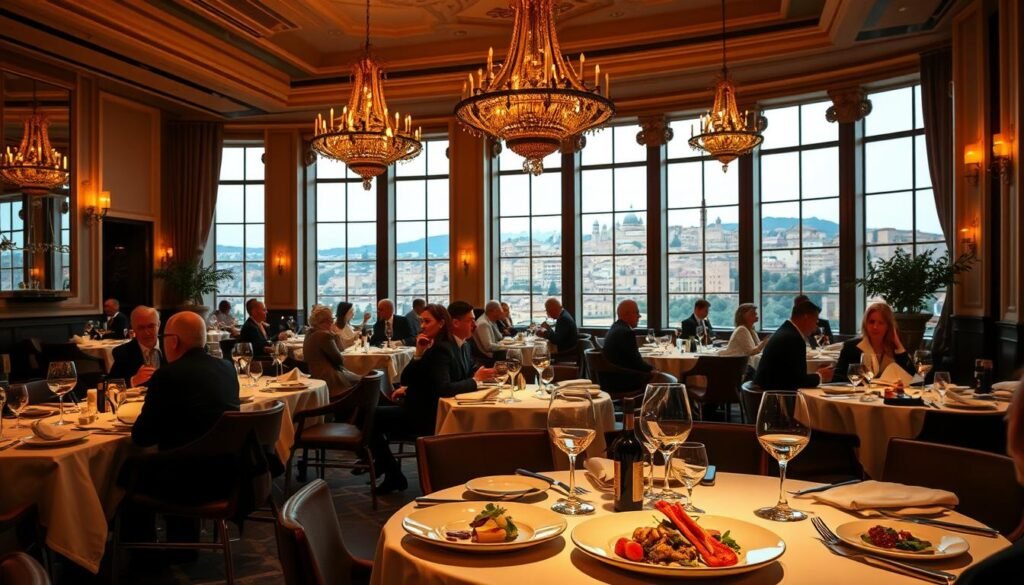
Nearby, Modena’s gourmet Modena experience goes beyond famous names. At Hostaria Giusti, hidden behind a historic salumeria, you’ll enjoy balsamic-glazed pheasant. It was a dish where old vinegar meets new plating.
| Restaurant | Culinary Focus | Signature Dish |
|---|---|---|
| Osteria Francescana | Modernist reinterpretations | “Oops! I Dropped the Lemon Tart” |
| Hostaria Giusti | Balsamic-centric creations | Cured meats with aged balsamic drizzle |
| L’Erba del Re | Ingredient-driven tradition | Truffle risotto with wild herbs |
L’Erba del Re showed that luxury Italian dining can respect tradition. Chef Luca Marchini’s truffle risotto was earthy and precise. It reminds you that Modena’s Michelin restaurants are innovators and guardians.
Getting a table here takes months of planning. But these tables offer a unique look into Emilia-Romagna’s soul. Every bite is a lesson in patience, from slow-aged balsamic to 24-hour simmered ragù. Here, fine dining Modena goes beyond meals—it’s a sensory journey through culinary history.
Bringing Home Liquid Memories: Shopping for Authentic Balsamic
Exploring Modena’s historic acetaie, you’d discovered that buying authentic balsamic vinegar is a journey. The Modena balsamic souvenirs vary from common IGP blends to rare DOP treasures. Each bottle shares a tale of tradition and time.
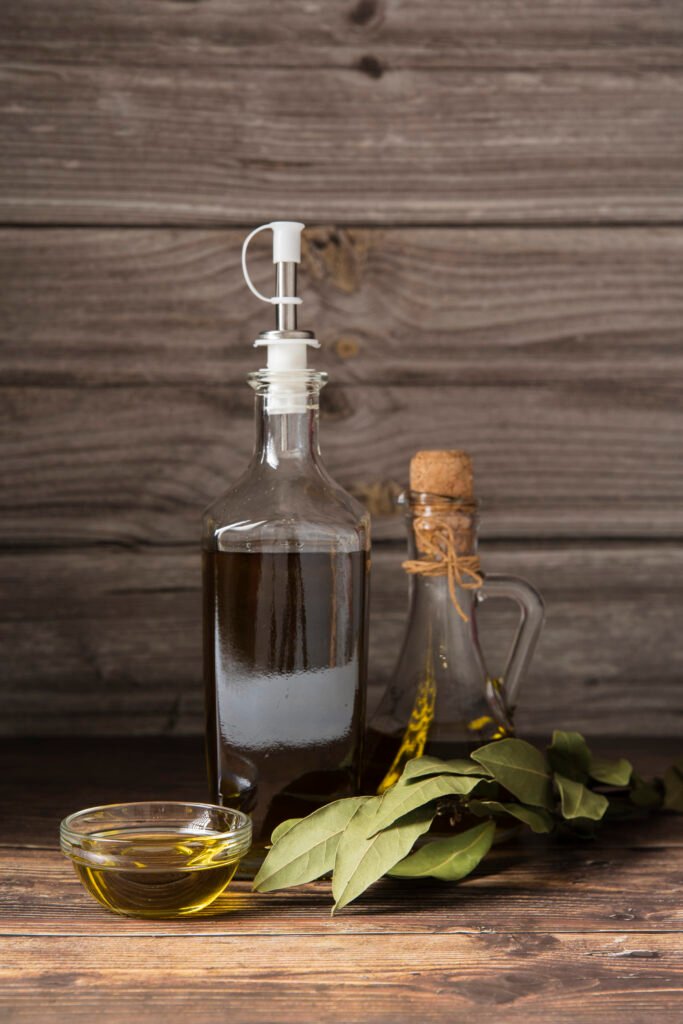
A traditional balsamic price guide shows the value of a 100ml bottle of 25-year-aged DOP. It can cost €150-200. This price reflects the slow aging process in wooden casks.
Price Points: Understanding Value in Balsamic Vinegar
- Everyday kitchen staples: IGP-grade vinegar (€5-20) for cooking
- Luxury condiments: DOP aged balsamic (€50-200+) for drizzling
- Collector’s editions: 50-year reserves (€300+) as edible heirlooms
Spotting Fakes: How to Ensure Authenticity
At Casa Bertagni, your guide will teach you to spot real balsamic. Look for a bulb-shaped bottle and a PDO seal. True balsamic vinegar lists only cooked grape must, not additives.
“True viscosity comes from aging, not chemicals,” Master Producer Giuseppe Rossi whispered.
Shipping and Customs Considerations for American Travelers
When importing balsamic vinegar, shops like Acetaia Pedroni offer vacuum-sealed travel packs. Declare bottles over 0.5L as personal effects to avoid duty fees. Treat your balsamic like liquid gold.
The Slow Food Philosophy: What Modena Teaches Us About Culinary Patience
In Modena, time is measured in decades, not minutes. Your journey through its acetaie showes you patience is a flavor. The slow food movement here is more than a trend—it’s a bond between generations.
“This vinegar isn’t mine—it’s a loan from those who came before and those yet to come.”
Applying Modenese Food Wisdom to American Cooking
Bringing this mindset home changed your cooking. You’ll now let tomatoes dry on my porch instead of rushing sauces. I’ve learned traditional food preservation techniques with local fruits.
The Italian culinary philosophy will teach you simplicity honors ingredients. A drizzle of Modena’s balsamic reminds you to savor the wait.
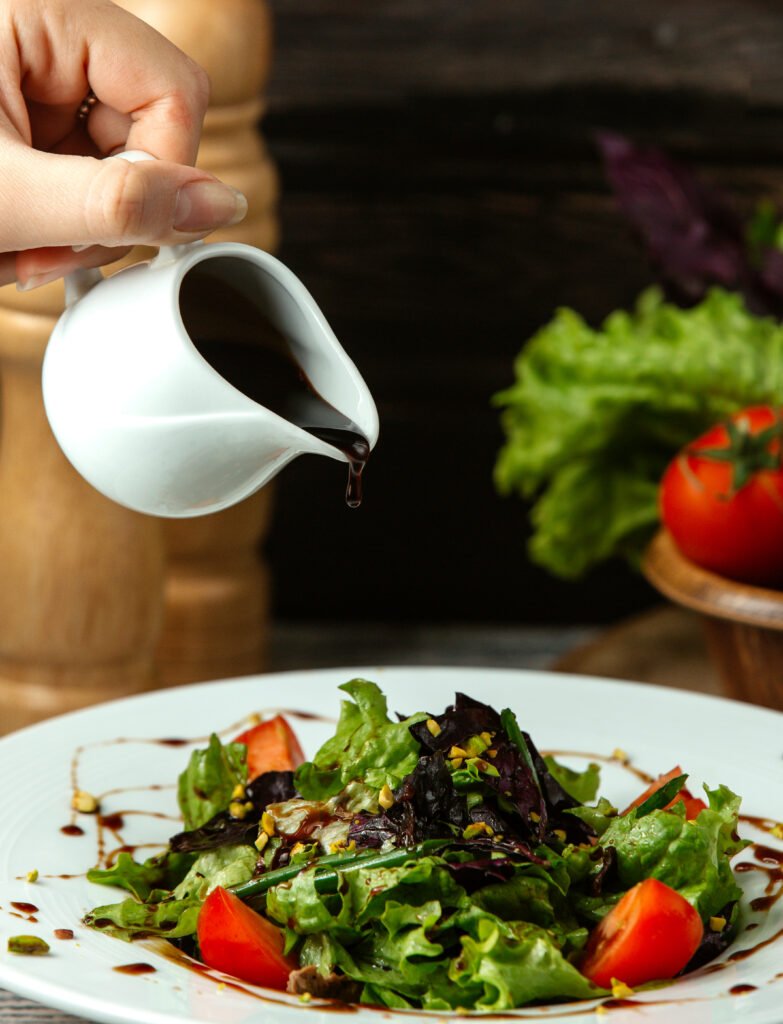
Sustainability Lessons from Traditional Methods
Modenese producers will show you sustainability is old, not new. Their sustainable food traditions use every grape skin and oak barrel scrap. Young artisans mix copper casks with solar panels, showing tradition can evolve.
They have zero-waste systems and value time in aging food. This shows good food can’t be rushed and must respect the earth.
These lessons aren’t just for Italy. They’re for anyone wanting to change how we eat, cook, and care for the land.
Conclusion: Why Every Food Lover Deserves a Pilgrimage to Modena
Modena is more than just a place to eat. It’s a journey where every taste has a story. The slow aging of balsamic vinegar turns simple ingredients into a heritage.
Visiting Modena is about more than just tasting food. It’s about connecting with the land and culture. You can explore markets, acetaie tours, and family-run authentic Italian food experiences. Walking through Modena feels like entering the heart of Emilia-Romagna’s food journey. Every vinegar drop or prosciutto slice tells a story of centuries of skill.
Traveling to Modena teaches you patience and pleasure. Producers here honor the seasons, soil, and community. Sipping balsamic in its aging attics or pairing Lambrusco with cheeses shows the power of tradition and passion.
Even a short visit to Modena can deepen your love for food. It connects us to place and history. Modena’s treasures like DOP balsamic and Parmigiano are special here.
The real treasures are the moments with family, the scent of aging barrels, and the artisans’ stories. For those who see food as a cultural language, Modena is the ultimate destination. It teaches us to live slowly, savor every moment, and taste the soul of Emilia-Romagna.
